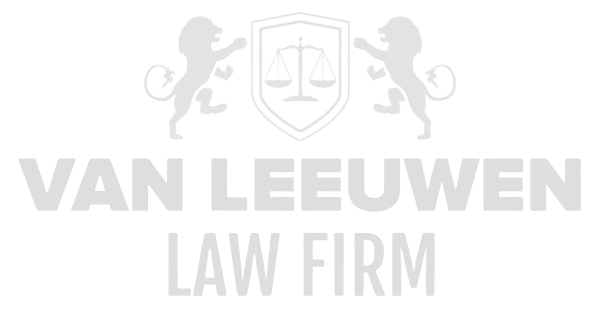Implementing a cookie policy is an essential part of a robust Privacy Data and Cybersecurity Framework. Cookies are a crucial building block for modern web applications and marketing tools but simultaneously present significant privacy risks. Without a clear policy and technically enforceable mechanisms, there is a danger of unintended, unlawful, or unlicensed processing of personal data, potentially resulting in sanctions from the supervisory authority and reputational damage.
A well-thought-out cookie policy not only provides legal certainty under the GDPR and the ePrivacy Directive but also strengthens user trust through transparency and control. By implementing clear guidelines, a detailed inventory, user-friendly consent mechanisms, and continuous monitoring, a governance structure is created that ensures both compliance and operational efficiency.
Inventory and Classification of Cookies
An accurate inventory is the first step: all cookies (first-party and third-party) should be systematically detected and documented. This includes functional cookies for essential navigation, analytical cookies for usage analysis, marketing cookies for profiling, and any other categories such as social media cookies. For each cookie, the name, domain, purpose, retention period, and access to data must be recorded.
After the inventory, a thorough classification follows based on their legal status and privacy impact. Functional cookies can be placed without consent, while analytical and marketing cookies require explicit, informed, and revocable consent. Furthermore, each cookie must be evaluated to determine whether it processes sensitive personal data or is part of cross-site tracking, as this requires additional safeguards.
This centralized cookie inventory forms the basis for both the design of consent banners and technical implementation. By linking cookies to metadata—such as category, vendor, and risk assessment—a dynamic register can be established that automatically updates with new releases or external script changes.
Legal Frameworks and Privacy Principles
A comprehensive cookie policy begins with establishing the legal basis for each category of cookies. Functional cookies fall under the “legitimate interest” to make the website work, while analytical and marketing cookies rely on the explicit consent of the user. Consent must be freely given, specific, informed, and unambiguous, with the option for withdrawal through the same interface.
Moreover, the policy document should include clear references to relevant articles from the GDPR (particularly Article 6) and the ePrivacy Directive. Transparency regarding the rights of data subjects—such as access, withdrawal of consent, and deletion of cookies—should be embedded in both the privacy statement and the cookie banner. The policy also describes how opt-out requests are processed within technical and organizational processes.
For international websites, additional legal requirements in non-EU countries, such as the CCPA in California or similar regional privacy laws, must be considered. The cookie policy includes modular provisions so that local variations can easily be activated depending on the geographic location of the visitor.
Technical Implementation and Consent Management
The technical realization of the cookie policy requires the integration of a Consent Management Platform (CMP) or custom-built solution that complies with the IAB Transparency & Consent Framework (TCF) standards. The CMP automatically detects new cookies, displays a configurable banner, and blocks non-essential cookies until the user grants consent.
Consent statuses are logged and encrypted, with references to the timestamp, version number of the privacy policy, and the specific cookie categories for which consent has been granted or denied. These logs serve as evidence in case of audits or incident investigations. Additionally, consent cookies themselves must be configured to comply with maximum retention periods and automatically be deleted when the user withdraws their consent.
Integration with frontend and backend systems ensures that API calls, analytics scripts, and advertising tags are only activated after explicit consent has been granted. For third-party services, consent proxies or script wrappers are used to prevent external scripts from placing cookies without the CMP’s control. This technical design enables programmatic blocking and releasing of cookies, in line with user preferences.
Communication and User Interface
A user-friendly cookie banner is the first point of contact with the visitor about privacy. The banner includes clear, non-legal language about the purpose of each cookie category, with option buttons for “Strictly Necessary,” “Functional,” “Analytical,” and “Marketing.” Through “more information,” users can click through to detailed cookie statements or the privacy policy.
The interface design follows accessibility standards (WCAG 2.1) and is mobile-responsive. Key elements such as contrast, font size, and interactive buttons ensure optimal readability and user-friendliness. A return or modification option, such as a static icon at the bottom of the page, makes it easy for users to adjust their preferences afterward.
In addition to the banner, the policy includes an extensive cookie statement on the website, detailing technical details, vendors, retention periods, and contact information. This statement contains a clear table and an option to download the complete CMP log file, giving data subjects full insight into their given consents.
Monitoring, Audits, and Ongoing Adjustments
After the cookie system goes live, a periodic audit process is necessary. This includes automated scans for new or changed cookies, reviews of CMP logs for inconsistent consent usage, and random checks of pages to verify whether blocking is effective. Audit reports are aggregated into management dashboards with KPIs such as “Acceptance Rate per Category” and “Average Response Time for Modification Requests.”
Technical monitoring tools alert deviations, for example, when a new external script places a cookie outside the CMP’s control. These alerts lead to immediate triage: Is it an authorized change missing from the register, or a potential risk? A change-approval process is followed to quickly update the cookie register and adjust the CMP configuration.
The cookie policy is reviewed annually or sooner if legislation, technology, or user expectations change. Lessons learned from audits, incident investigations, and user feedback lead to concrete updates in the policy, user interface, and technical implementation. This ensures that the cookie policy remains future-proof, compliant, and aligned with the interests of both the organization and the data subjects.









